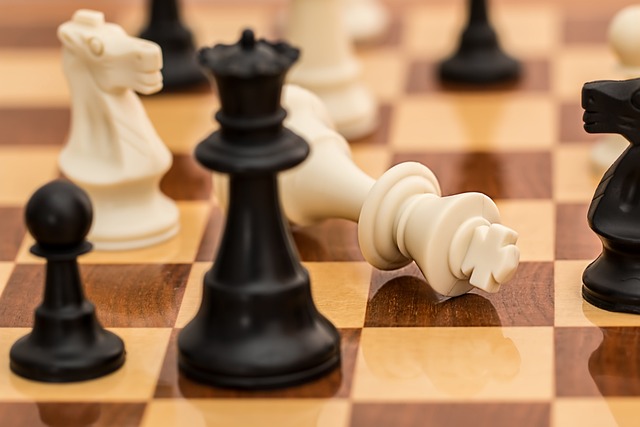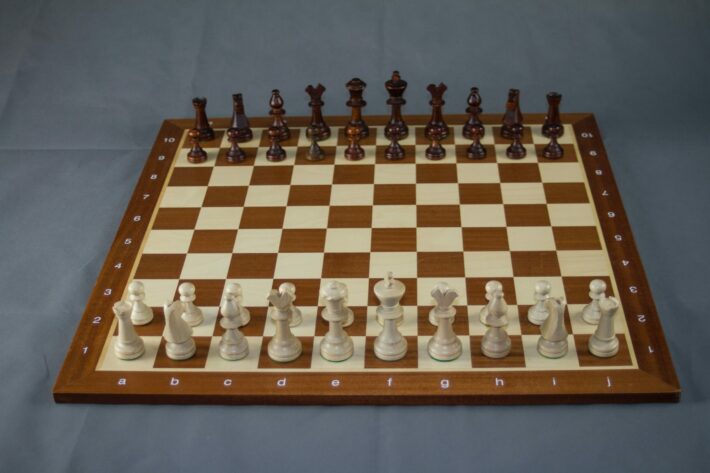Are you ready to elevate your chess game to new heights? The secret lies in understanding the art of analyzing chess openings. Whether you’re a seasoned player or just starting out, this guide will unveil effective strategies and techniques to help you decode the complexities of chess openings.
Get ready to make your moves with confidence and precision as we delve into the best ways to analyze your chess openings.
How can I unravel the hidden potential of my chess openings?
Unraveling the hidden potential of your chess openings requires a combination of curiosity and strategic thinking. Dive deep into the intricacies of each opening, exploring the nuances and possibilities that lie within.
Pay attention to the specific pawn structures, piece placements, and potential tactical opportunities that arise. By closely analyzing these elements, you’ll uncover the hidden gems and unlock the true potential of your chess openings.
Are there any key principles to consider while analyzing chess openings?
When it comes to analyzing chess openings, there are key principles that can guide your approach. Firstly, understanding the importance of development and piece activity is crucial. Look for moves that facilitate the harmonious development of your pieces and aim to control the center of the board.
Additionally, consider the principles of king safety, pawn structure, and the balance between attack and defense. By adhering to these principles, you can lay a strong foundation for your opening analysis.
What are the common mistakes to avoid when studying chess openings?

While studying chess openings, it’s essential to be aware of common mistakes that can hinder your progress. One such mistake is memorizing moves without understanding the underlying ideas and concepts. Instead, focus on grasping the strategic goals and tactical possibilities associated with each move.
Another pitfall to avoid is neglecting to analyze your losses. Learning from your mistakes is invaluable, so take the time to identify the flaws in your opening play and make the necessary adjustments.
How can I identify the strengths and weaknesses of different opening moves?
Identifying the strengths and weaknesses of different opening moves requires a keen eye for evaluating positions. Look for moves that create opportunities for piece development, central control, and pawn structure improvement.
Assess the potential for attacking chances or long-term positional advantages. Conversely, be mindful of moves that may lead to passive positions or vulnerabilities. By carefully evaluating each move, you’ll gain insight into their inherent strengths and weaknesses.
What role does pattern recognition play in analyzing chess openings?
Pattern recognition is a vital aspect of analyzing chess openings. By studying patterns and recurring themes in different openings, you can develop a deeper understanding of their strategic concepts and tactical ideas.
Recognizing common motifs such as pawn breaks, piece sacrifices, or positional maneuvers will enable you to make more informed decisions during your analysis. Embrace the art of pattern recognition, and it will become a powerful tool in your opening analysis arsenal.
How can I adapt my analysis to different playing styles and opponents?
Adapting your analysis to different playing styles and opponents requires flexibility and a broad understanding of various strategic approaches. Study the games of different players, from aggressive attackers to positional masters, and learn how they handle different openings.
Identify their strengths and weaknesses and consider how you can counter their style or emulate their successful strategies. Adapting your analysis will allow you to tailor your opening choices and gameplay accordingly, increasing your chances of success.
What resources and tools can enhance my chess opening analysis?

To enhance your chess opening analysis, utilize the vast array of resources and tools available. Online databases, books, and videos provide valuable insights into specific openings, their variations, and the ideas behind them. Computer programs and chess engines can assist in deep analysis, identifying tactical possibilities, and evaluating move choices.
Engage in discussions with fellow chess enthusiasts or seek guidance from coaches and mentors. By leveraging these resources and tools, you’ll expand your knowledge and improve your opening analysis skills.
How do grandmasters approach the analysis of chess openings?
When it comes to grandmasters and their approach to analyzing chess openings, thoroughness, and creativity are key. They meticulously analyze various opening lines, study historical games, and explore new ideas. Grandmasters focus on understanding the underlying concepts and strategic goals of each opening, enabling them to adapt and innovate during play.
They blend theoretical knowledge with their intuition and experience to create novel approaches and surprises for their opponents. Emulate their dedication and creative mindset to elevate your own opening analysis to the grandmaster level.
Are there any specific strategies for analyzing the most popular chess openings?
Analyzing the most popular chess openings requires a strategic approach tailored to each specific opening. By studying the games of top players and analyzing their chosen variations, you can gain valuable insights into the key ideas, plans, and tactical motifs associated with those openings.
Look for common themes and recurring patterns in these popular openings to understand their strategic essence better. By immersing yourself in the specific strategies of popular chess openings, you’ll be well-equipped to navigate the complexities of these well-known battlegrounds.
How can I effectively evaluate the risks and rewards of different opening variations?
Effectively evaluating the risks and rewards of different opening variations demands a discerning eye and an understanding of positional dynamics. Consider the potential benefits of each variation, such as piece activity, pawn structure advantages, or strategic aims. Simultaneously, assess the risks, such as weakened king safety or exposed pieces.
Look for imbalances and critical moments in the position that could tilt the scales in your favor. By carefully weighing the risks and rewards, you can make informed decisions and choose opening variations that align with your playing style and preferences.
What are the indicators of a successful chess opening analysis?
Indicators of a successful chess opening analysis manifest in several ways. Firstly, a well-analyzed opening allows you to achieve your strategic goals, whether it be control of the center, effective piece development, or specific tactical opportunities.
Additionally, a successful opening analysis enables you to navigate the middlegame with a clear plan and understanding of the resulting positions. Consistency in your opening choices and results is another positive sign, indicating that your analysis is yielding favorable outcomes. Ultimately, a successful chess opening analysis enhances your overall gameplay and sets the stage for victory.
How can I use computer programs and databases to improve my opening analysis?
Computer programs and databases are invaluable tools for improving your opening analysis. Utilize chess engines to conduct a deep analysis of critical positions, assess variations, and identify hidden tactical possibilities. Database tools allow you to explore the games of top players, search for specific openings, and gain insights into their choices and outcomes.
Additionally, online resources and platforms provide access to vast databases of opening theories and analysis by experts. By leveraging these computer programs and databases, you can enhance your opening analysis and stay at the cutting edge of chess knowledge.
What insights can I gain from studying the games of chess legends?

Studying the games of chess legends offers invaluable insights and inspiration. By delving into the masterpieces created by the likes of Bobby Fischer, Anatoly Karpov, Garry Kasparov, and others, you can absorb their strategic brilliance, unique approaches, and creative maneuvers.
Analyze their opening choices, their handling of critical moments, and the resulting middlegame and endgame positions. Learn from their successes and failures, and strive to incorporate their innovative ideas into your own gameplay. Studying the games of chess legends serves as a wellspring of inspiration and a source of profound understanding.
How can I stay up-to-date with the latest developments in chess opening theory?
To stay up-to-date with the latest developments in chess opening theory, it’s essential to engage with the chess community and immerse yourself in relevant resources. Follow reputable chess publications, both online and in print, that cover opening developments, new ideas, and recent games.
Engage in discussions on chess forums and social media platforms to exchange ideas and learn from fellow chess enthusiasts. Attend tournaments, watch live streams, and analyze games from current top players to gain insight into their opening innovations. By actively participating in the chess community and staying curious, you’ll stay abreast of the latest developments in chess opening theory.
What are the best ways to integrate my opening analysis into my overall chess strategy?
| Approach | Advantages | Considerations |
|---|---|---|
| Deep analysis with chess engines | – Uncover hidden tactical possibilities – Evaluate move variations accurately |
– Requires access to reliable chess engines – May lead to overreliance on computer suggestions |
| Studying games of chess legends | – Gain strategic insights and creative ideas – Understand masterful decision-making |
– Requires time and effort for thorough analysis – Not always directly applicable to current game scenarios |
| Engaging in discussions with fellow players | – Exchange ideas and perspectives – Learn from collective experiences |
– Information may vary in accuracy and quality – Personal biases and opinions can influence advice |
| Utilizing online databases and resources | – Access to a vast collection of opening theory – Explore various lines and variations |
– Quality of information may vary – Requires discernment in selecting reliable sources |
| Analyzing your own games | – Identify personal strengths and weaknesses – Learn from mistakes and make improvements |
– Requires honest self-evaluation – Limited to one’s own playing experience |
Integrating your opening analysis into your overall chess strategy involves aligning your chosen openings with your long-term goals and playing style. Analyze how your opening choices contribute to achieving your strategic aims, whether it’s launching a powerful attack, solidifying your defenses, or maneuvering for positional advantages.
Ensure that your opening choices lead to middlegame positions that you feel comfortable and confident playing. Continuously assess the effectiveness of your opening analysis in the context of your overall chess strategy, making adjustments and refinements as needed.
Final remarks
In conclusion, mastering the art of analyzing chess openings is a transformative journey that can elevate your game to new heights. By unraveling the hidden potential, understanding key principles, and avoiding common mistakes, you’ll gain a deeper appreciation for the strategic complexities of chess.
Pattern recognition, adaptability to different playing styles, and utilizing resources and tools like computer programs and databases will enhance your opening analysis. Drawing insights from chess legends and staying up-to-date with the latest developments in opening theory will keep you sharp and inspired.
Finally, integrating your opening analysis into your overall chess strategy will ensure a cohesive and effective approach to the game. Embrace these strategies and techniques, and prepare to unleash the full potential of your chess openings, setting the stage for triumph on the board.




